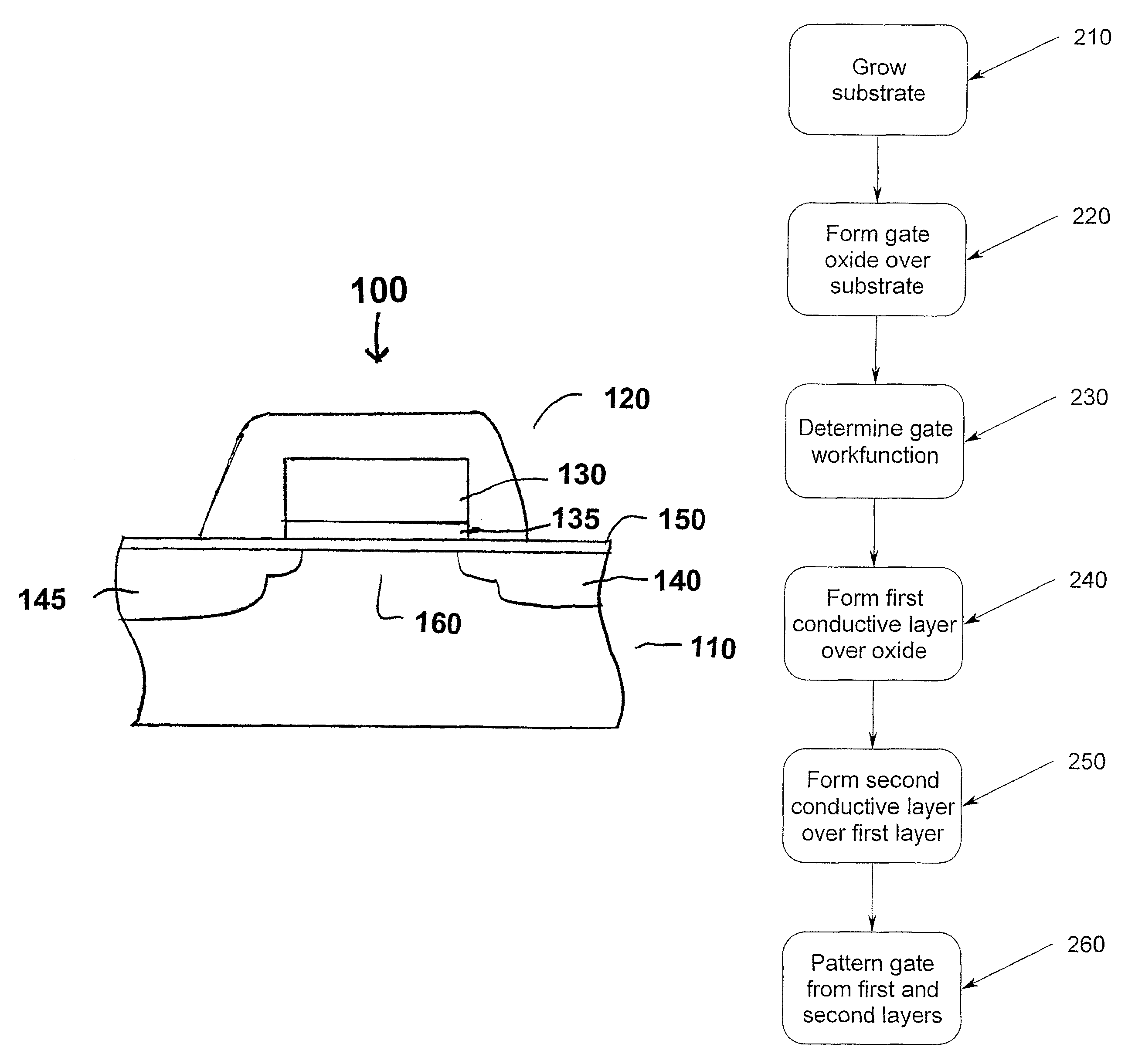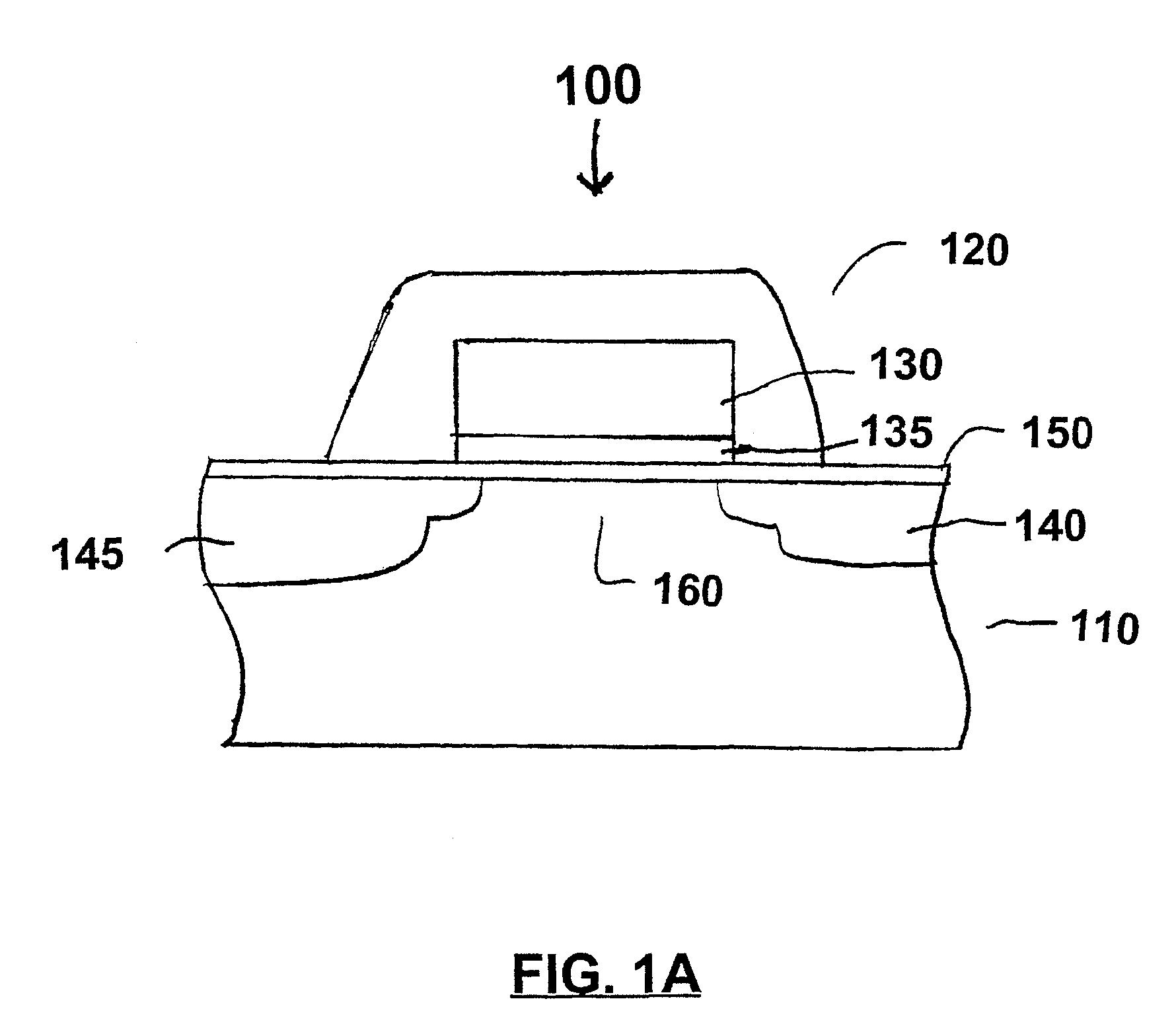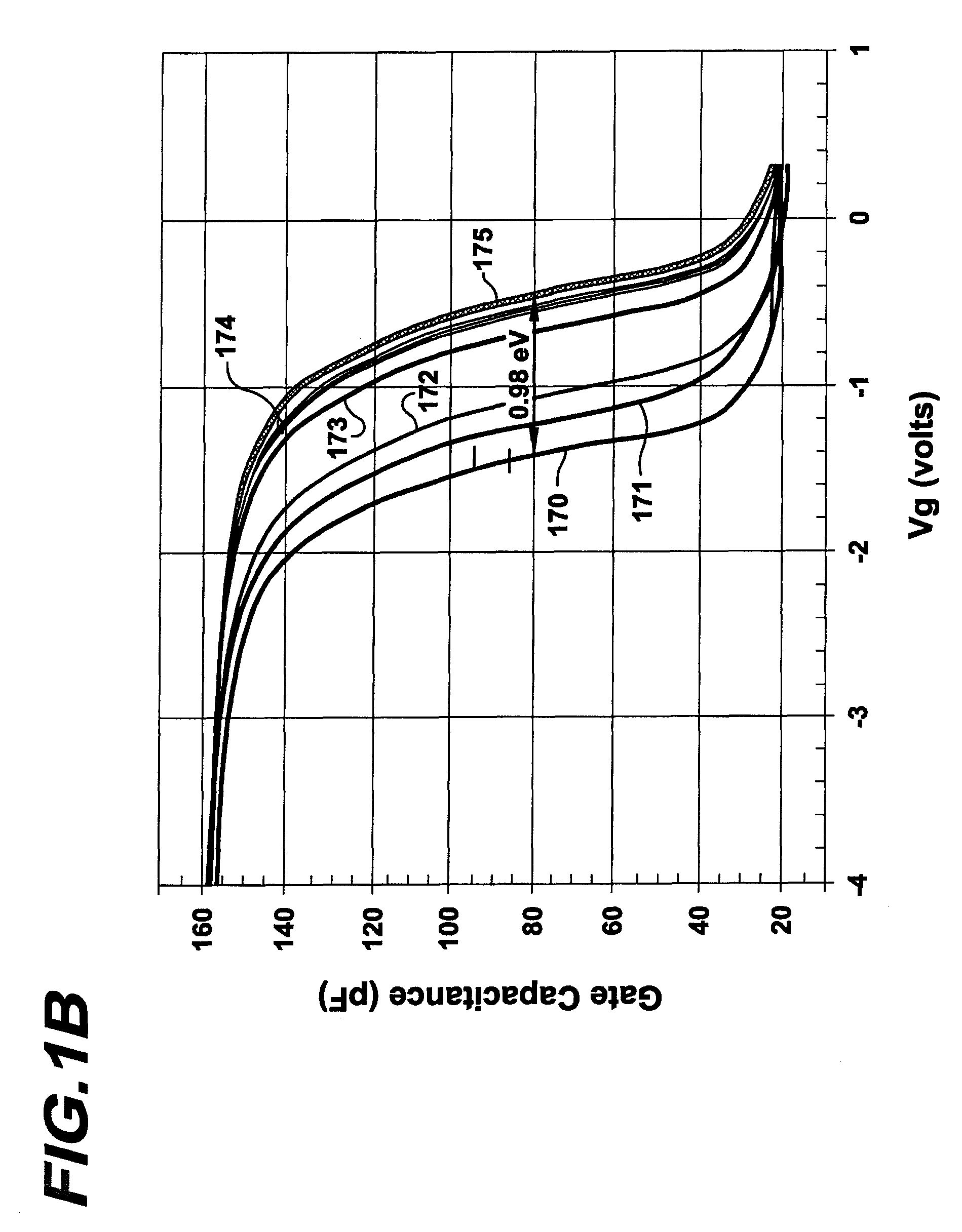Gate electrode with depletion suppression and tunable workfunction
a technology of depletion suppression and workfunction, applied in the field of semiconductor devices, can solve the problems of increasing complexity, increasing circuit density and complexity, and reducing power consumption and package sizes of integrated circuit devices, so as to reduce the effect of gate depletion effect, low gate resistivity, and high performance mosfets
- Summary
- Abstract
- Description
- Claims
- Application Information
AI Technical Summary
Benefits of technology
Problems solved by technology
Method used
Image
Examples
Embodiment Construction
[0023]The present invention is believed to be applicable to a variety of different types of semiconductor devices, and the invention has been found to be particularly suited for devices in the deep-sub-micron regime, such as MOS devices, thyristors and other structures including a gate electrode over an underlying substrate. While the present invention is not necessarily limited to such applications, various aspects of the invention may be appreciated through a discussion of various examples using this context.
[0024]According to an example embodiment of the present invention, a gate electrode having a tunable effective workfunction is formed in a semiconductor device. At least two conductive materials are used in a selected arrangement to form the gate electrode, and the arrangements are selected to achieve an effective gate workfunction that provides a selected threshold voltage for the device. The gate is adapted to be formed in one of a plurality of configurations, each configura...
PUM
 Login to View More
Login to View More Abstract
Description
Claims
Application Information
 Login to View More
Login to View More - R&D
- Intellectual Property
- Life Sciences
- Materials
- Tech Scout
- Unparalleled Data Quality
- Higher Quality Content
- 60% Fewer Hallucinations
Browse by: Latest US Patents, China's latest patents, Technical Efficacy Thesaurus, Application Domain, Technology Topic, Popular Technical Reports.
© 2025 PatSnap. All rights reserved.Legal|Privacy policy|Modern Slavery Act Transparency Statement|Sitemap|About US| Contact US: help@patsnap.com



